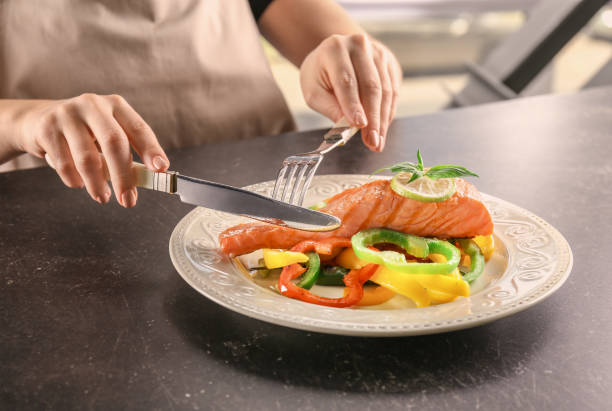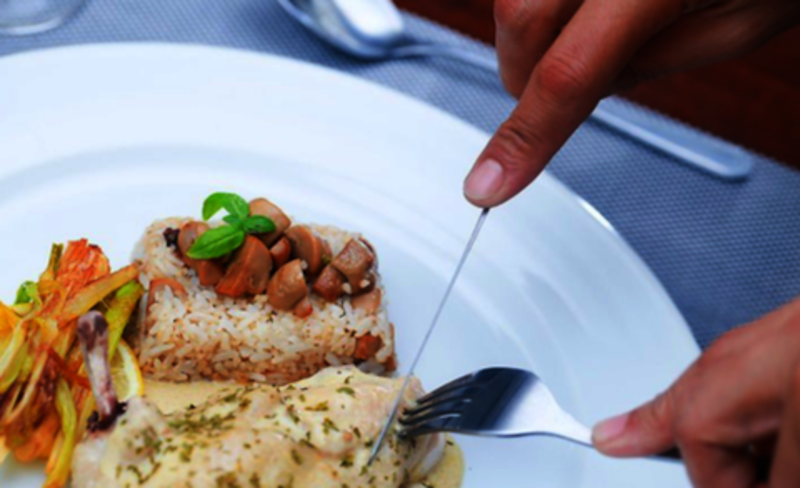In a professional kitchen environment, knowing when to put the knife down during a meal is not just a matter of etiquette but also a reflection of ones expertise and professionalism. This subtle art of dining etiquette is crucial for kitchen professionals who wish to convey respect and sophistication at the dining table. Understanding these nuances can enhance both the dining experience and the perception of culinary skills.
For those deeply embedded in the culinary world, the question of when to put the knife down during a meal often intersects with broader questions of table manners and etiquette. From Michelin-starred chefs to kitchen novices, everyone benefits from understanding these unwritten rules of dining.

The Art of Knife Etiquette
Knife etiquette goes beyond merely knowing how to handle a knife. It's about timing, precision, and an awareness of the dining environment. In professional settings, the way you manage your utensils can speak volumes about your training and respect for culinary traditions. Many chefs and kitchen professionals adhere to the principle that the knife should be put down between bites. This pause not only allows for conversation and appreciation of the meal but also signifies the transition between the preparation phase and the enjoyment phase of dining.
Why Timing Matters
Timing in knife etiquette is critical. It influences the pace of the meal and ensures that the dining experience is both enjoyable and respectful. In a professional setting, such as a high-end restaurant, knowing finished knife position etiquette can prevent awkward situations and enhance the overall dining experience.
Indicators of When to Rest Your Knife
There are several indicators that suggest when its appropriate to rest your knife. One primary indicator is the completion of a course. When youve finished a course, rest your knife parallel to your fork on the plate, signaling to the staff that youre ready for the next course or that youve finished eating. This practice is explained in detail in articles such as resting knife position etiquette.
Practical Tips for Kitchen Professionals
As a kitchen professional, understanding these nuances can elevate your dining etiquette. Here are some practical tips:
1. Understanding the Dining Environment
The dining environment often dictates when you should put down your knife. In formal settings, such as banquets or gourmet dining experiences, it is customary to put down the knife after cutting the food and before taking a bite. This practice signals respect for the meal and the company.
2. Cultural Variations in Knife Etiquette
Different cultures have distinct dining customs. For example, in European dining etiquette, it is common to keep the fork in the left hand and the knife in the right throughout the meal, only resting the knife when the meal is finished. Understanding these cultural differences is essential for kitchen professionals who work in diverse environments.
For more insights, you can visit Food Republics guide on dining etiquette.
3. Practicing Mindfulness
Mindfulness during meals is a valuable skill for kitchen professionals. Paying attention to your dining companions, the pace of the meal, and the atmosphere can guide you on when to put down your knife. Mindful dining not only improves etiquette but also enhances the overall dining experience.
Common Mistakes and How to Avoid Them
Even seasoned kitchen professionals can make mistakes in knife etiquette. Here are some common pitfalls and how to avoid them:
1. Overusing the Knife
Overusing the knife during a meal can disrupt the dining experience. Its important to remember that the knife should be used primarily for cutting, not as a tool for eating. After cutting, place the knife down and use the fork to bring the food to your mouth.
2. Incorrect Knife Placement
Placing the knife incorrectly on the plate can send unintended signals. Ensure that the knife is placed parallel to the fork, with the blade facing inward. This placement indicates that you are resting, not finished. For more tips, visit knife etiquette with prime rib.
3. Ignoring Cultural Norms
Ignoring cultural norms can lead to misunderstandings. Always research and respect the dining customs of the culture you are engaging with. This awareness is particularly important for kitchen professionals who travel frequently or work in multicultural environments.
Conclusion
In conclusion, understanding when to put the knife down during a meal is essential for kitchen professionals who wish to demonstrate expertise and respect in dining situations. By mastering these skills, you not only enhance your professional reputation but also enrich your personal dining experiences. Remember, good etiquette is about showing respect to the meal, the company, and the culinary art itself.

FAQ
1. Why is knife etiquette important for chefs?
Knife etiquette is crucial for chefs as it reflects their training, respect for culinary traditions, and professionalism in dining settings.
2. Are there differences in knife etiquette across cultures?
Yes, there are significant cultural differences. For example, European dining etiquette often involves using both the knife and fork throughout the meal, whereas American etiquette may involve resting the knife more frequently.
3. Where can I learn more about knife etiquette?
For more detailed insights, visit resources like WikiHows guide on using a fork and knife.
This article contains affiliate links. We may earn a commission at no extra cost to you.


























